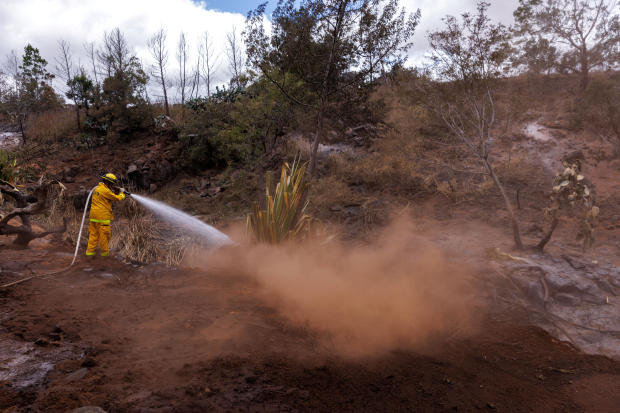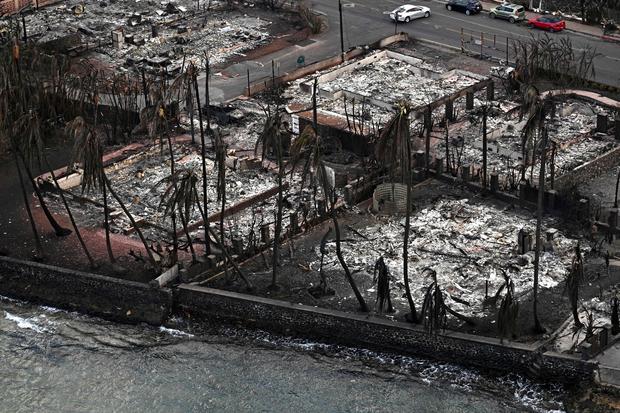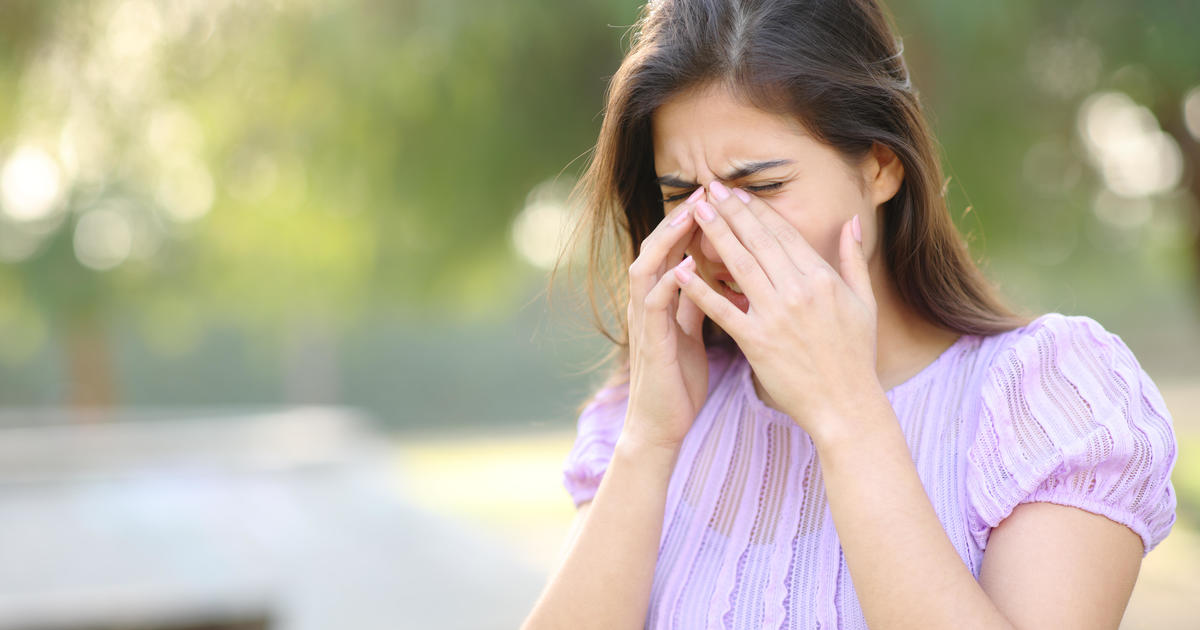How dangerous climate conditions fueled Maui's devastating wildfires
Hawaii went from lush to bone dry and thus more fire-prone in a matter of just a few weeks — a key factor in a dangerous mix of conditions appear to have combined to make the deadly wildfires that blazed a path of destruction in Hawaii particularly damaging.
Experts say climate change is increasing the likelihood of these flash droughts as well as other extreme weather events like what's playing out on the island of Maui, where scores of people have been killed and a historic town devastated.
"It's leading to these unpredictable or unforeseen combinations that we're seeing right now and that are fueling this extreme fire weather," said Kelsey Copes-Gerbitz, a postdoctoral researcher at the University of British Columbia's faculty of forestry. "What these ... catastrophic wildfire disasters are revealing is that nowhere is immune to the issue."
Here's a look at the Maui fires, and what's behind them:
Flash droughts
Flash droughts are so dry and hot that the air literally sucks moisture out of the ground and plants in a vicious cycle of hotter-and-drier that often leads to wildfires. And Hawaii's situation is a textbook case, two scientists told The Associated Press.
As of May 23, none of Maui was unusually dry; by the following week it was more than half abnormally dry. By June 13 it was two-thirds either abnormally dry or in moderate drought. And this week about 83% of the island is either abnormally dry or in moderate or severe drought, according to the U.S. drought monitor.
Maui experienced a two-category increase in drought severity in just three weeks from May to June, with that rapid intensification fitting the definition of a flash drought, said Jason Otkin, an atmospheric scientist at the University of Wisconsin, Madison.
Otkin co-authored an April study that shows that flash droughts are becoming more common as Earth warms by human-caused climate change. A 2016 flash drought was connected to unusual wildfires in Gatlinburg, Tennessee, he said.
Even in the past week there's been "a quick acceleration" of that drought, said University of Virginia hydrologist Venkat Lakshmi. Flash droughts occur when the rain stops and it gets so hot that the atmosphere literally sucks moisture out of the ground and plants, making them more likely to catch fire.
"Plants are getting really, really dry," Lakshmi said. "It's all related to water in some ways."
"The most destructive fires usually occur during drought. If an area falls into drought quickly, that means there is a longer window of time for fires to occur," Otkin said. "The risk for destructive fires could increase in the future if flash droughts become more common, as some studies have indicated."
Invasive grasses
Elizabeth Pickett is the co-executive director of the Hawaii Wildfire Management Organization, a nonprofit that works with communities across Hawaii on wildfire prevention and mitigation. Pickett said there used to be massive tracts of land occupied by irrigated pineapples and sugar cane, and as those businesses declined and ceased, the lands were taken over by invasive, fire-prone grass species.
"The problem is at such a large scale, 26% of our state is now invaded by these grasses," she said Thursday. "The landscape that has been invaded is steep, rocky and challenging to access. It's a really hard landscape. You can't just go with a lawn mower."
When these grasses burn, they burn into the native forests, threatening endangered species, and then the forests are replaced by more grass, Pickett said.
High winds
Major differences in air pressure drove unusually strong trade winds that fanned the destructive flames, according to meteorologists.
Trade winds are a normal feature of Hawaii's climate. They're caused when air moves from the high-pressure system pressure north of Hawaii — known as the North Pacific High — to the area of low pressure at the equator, to the south of the state.
But Hurricane Dora, which passed south of the islands, exacerbated the low-pressure system and increased the difference in air pressure to create "unusually strong trade winds," said Genki Kino, a meteorologist with the National Weather Service office in Honolulu.
Hawaii's state climatologist, Pao-Shin Chu, said he was caught off guard by the impact Dora had from roughly 500 miles away.
"Hurricane Dora is very far away from Hawaii, but you still have this fire occurrence here. So this is something we didn't expect to see," he said.
Strong winds, combined with low humidity and an abundance of dry vegetation that burns easily, can increase the danger of wildfire, even on a tropical island like Maui.
"If you have all of those conditions at the same time, it's often what the National Weather Service calls 'red flag conditions,'" said Erica Fleishman, director of the Oregon Climate Change Research Institute at Oregon State University.
Role of climate change
"Climate change in many parts of the world is increasing vegetation dryness, in large part because temperatures are hotter," Fleishman said. "Even if you have the same amount of precipitation, if you have higher temperatures, things dry out faster."
Clay Trauernicht, a fire scientist at the University of Hawaii, said the wet season can spur plants like Guinea grass, a nonnative, invasive species found across parts of Maui, to grow as quickly as 6 inches (15 centimeters) a day and reach up to 10 feet (3 meters) tall. When it dries out, it creates a tinderbox that's ripe for wildfire.
"These grasslands accumulate fuels very rapidly," Trauernicht said. "In hotter conditions and drier conditions, with variable rainfall, it's only going to exacerbate the problem."
Climate change not only increases the fire risk by driving up temperatures, but also makes stronger hurricanes more likely. In turn, those storms could fuel stronger wind events like the one behind the Maui fires.
That's on top of other threats made worse by climate changes.
"There's an increasing trend in the intensity of hurricanes worldwide, in part because warm air holds more water," Fleishman said. "In addition to that, sea levels are rising worldwide, so you tend to get more severe flooding from the storm surge when a hurricane makes landfall."
While climate change can't be said to directly cause singular events, experts say, the impact extreme weather is having on communities is undeniable.
"These kinds of climate change-related disasters are really beyond the scope of things that we're used to dealing with," UBC's Copes-Gerbitz said. "It's these kind of multiple, interactive challenges that really lead to a disaster."






